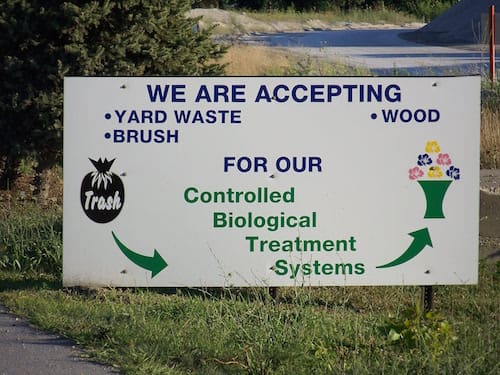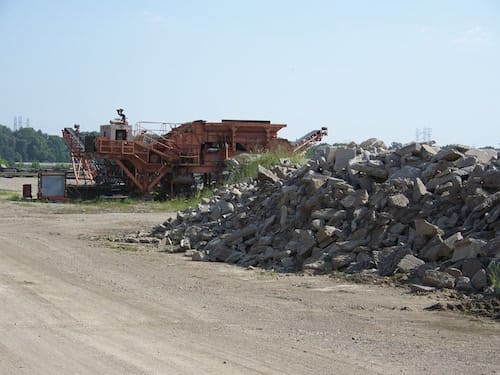Residential and Business
South Side Landfill, a privately owned enterprise, operates as a permitted municipal solid waste (MSW) landfill under IDEM permit #49-01.
We offer disposal services for household, small commercial and construction/demolition debris. These types of waste include, but are not limited to:
- General household waste, rubbish and debris.
- Office waste.
- Restaurant and food service waste.
- General construction and demolition debris (e.g. lumber, shingles, or brick).
What can’t I bring to South Side Landfill?
South Side Landfill is prohibited from accepting liquids, hazardous wastes or infectious wastes.
That means we cannot accept the following:
Old paints or other non-hazardous liquids are not allowed. However, they can be solidified (use sawdust, clay-based cat litter or cellulose insulation) and then brought to the landfill.
If you have old chemicals, cleaners, solvents, car batteries, used motor oil or pesticides, then you have Household Hazardous Waste (HHW). Go to Indy ToxDrop or contact NuGenesis (800-487-1010) to find out how to handle them.
How to identify Household Hazardous Waste:
Read the label. Look for words like Danger, Warning or Caution. A hazardous product has at least one of the following properties:
- Toxic – Toxic materials are either poisonous or cause long-term illnesses, like cancer. Pesticides, paint thinners, cleaners and automotive supplies are some examples of potentially toxic materials. Look for warnings like “Harmful”, “Fatal if swallowed” or “Use only in a well ventilated area.”
- Flammable – These materials burn easily. Paint thinners and other solvents, as well as many automotive products are often flammable. Look for warnings on the label like “Do not use near heat or flame”, “Combustible”, etc.
- Corrosive – Corrosive products eat through materials (acid, for example). Examples include oven cleaners, drain cleaners, toilet bowl cleaners and auto batteries. Look for warnings like “Causes severe burns on contact,” “Can burn eyes, skin, throat, etc.”
- Reactive – These are products that can explode (when exposed to heat, air, water or shock). There are few consumer products still on the market that are explosive, but some older explosive products may still be stored in some homes.



